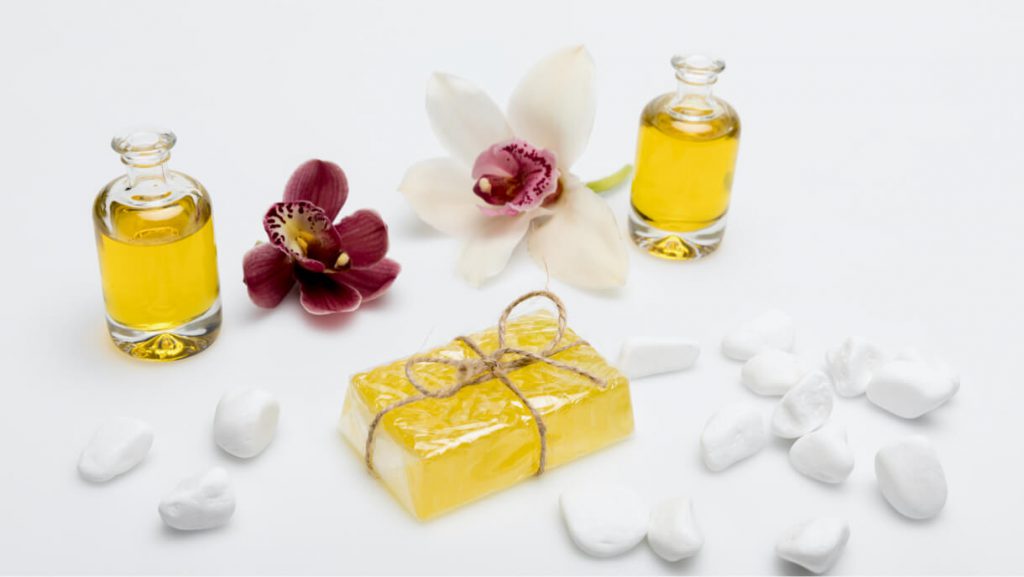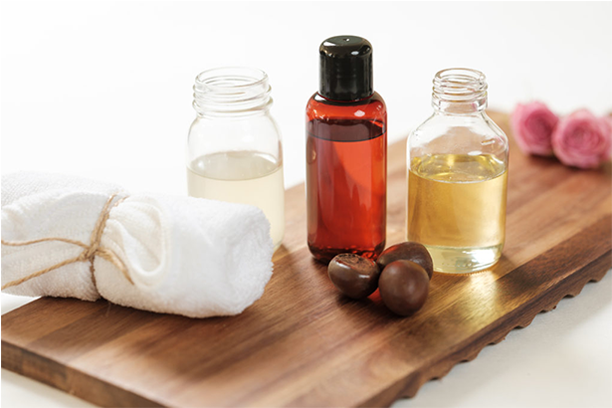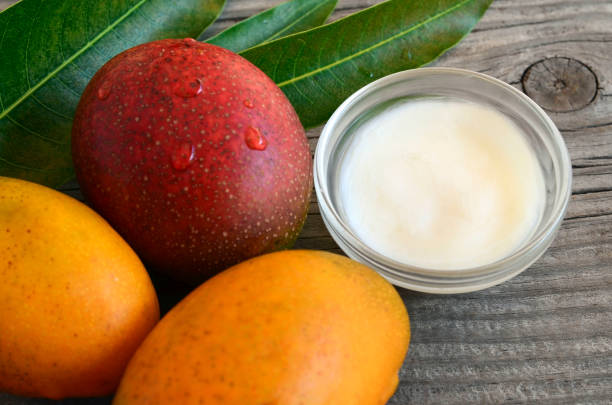
Top Grade Natural Aromatherapy Essential Oils
Nowadays, use of alternative and complementary therapies with mainstream medicine has gained the momentum. Aromatherapy is one of the complementary therapies which use essential oils as the major therapeutic agents to treat several diseases.
[restrict level=”subscriber”]
This content can only be seen by registered users only.
[/restrict]
The essential or volatile oils are extracted from the flowers, barks, stem, leaves, roots, fruits and other parts of the plant by various methods. It came into existence after the scientists deciphered the antiseptic and skin permeability properties of essential oils. Inhalation, local application and baths are the major methods used in aromatherapy that utilize these oils to penetrate the human skin surface with marked aura. Once the oils are in the system, they remodulate themselves and work in a friendly manner at the site of malfunction or at the affected area. This type of therapy utilizes various permutation and combinations to get relief from numerous ailments like depression, indigestion, headache, insomnia, muscular pain, respiratory problems, skin ailments, swollen joints, urine associated complications etc. The essential oils are found to be more beneficial when other aspects of life and diet are given due consideration.
The essential oils have found their importance as a fragrance with a curative potential on the body, mind and spirit. These aroma molecules are very potent organic plant chemicals that make the surroundings free from disease, bacteria, virus and fungus. Their versatile character of antibacterial, antiviral, anti-inflammatory nature along with immune booster body with hormonal, glandular, emotional, circulatory, calming effect, memory and alertness enhancer, is well documented by many scientists.
These oils are known for their energy specific character, as their potency is not lost with time and age. The stimulation properties of these oils lay in their structure which are closely in resemblance with actual hormones. The penetration potential of these oils to reach the subcutaneous tissues is one of the important characters of this therapy. Their effects are also complex and subtle due to their complex structure and chemical properties. The mechanism of their action involves integration of essential oils into a biological signal of the receptor cells in the nose when inhaled. The signal is transmitted to limbic and hypothalamus parts of the brain via olfactory bulb. These signals cause brain to release neuro messengers like serotonin, endorphin etc., to link our nervous and other body systems assuring a desired change and to provide a feeling of relief. Serotonin, endorphin and noradrenalin are released from calming oil, euphoric, and stimulating oil respectively to give expected effect on mind and body.
Plants producing essential oils
| Essential oils | Parts of the plant |
|---|---|
| Bergamot, lemon, lime, sweet orange, tangerine, mandarin | Fruit peel |
| Cinnamon | Bark |
| Citronella, lemongrass, petitgrain, palmarosa, patchouli | Leaves |
| Geranium, lavender, rosemary, spike lavender | Entire plant |
| Ginger, vetiver | Roots |
| Jasmine, neroli (orange blossom), rose, ylang ylang | Flowers |
Clary sage
Clary sage (Salvia sclarea Linn.) belongs to the family of Lamiaceae. Purple tinted large hairy green leaves are the main source of essential oil in clary sage, perennial herb. It is different from, Salvia officinalis or a common sage. Further, it can be differentiated by its size of leaves which are much larger than the common one and its color is bluish white in late summer. It contains mainly linalool, linalyl acetate, alpha-terpineol, germacrene D, and geranyl. It’s a boon for women as its tonic is used for womb and uterus associated problems, and it also regulate the menstrual periods, ease tension and muscle cramps along with a seductive and aphrodisiac activity.
It helps in controlling the sebum production, hence can be used for both dry and oily skin, along with acne, wrinkles and for controlling cellulite.
Eucalyptus.
Eucalyptus [Eucalyptus globulus Labill] belonging to the family of Myrtaceae, is a long evergreen plant with a height up to 250 feet . It is known for its constituents like cineole (70%–85%), aromadendrene limonene terpinene, cymene, phellandrene, and pinene. Its oils have been used to regulate and activate the various systems like nervous system for neuralgia, headache and debility. The immune system boosts the immunity against measles, flu, cold and chickenpox. Leucorrhea and cystitis of genitourinary system can also be well treated with it. Throat infections, catarrh, coughs, bronchitis, asthma and sinusitis associated with respiratory system have been taken care of by oils of this plant. Moreover, skin problems like wounds, cuts, burns, herpes, lice, insect repellent and insect bites can be treated with it. Treatment of rheumatoid arthritis, muscle and joint pains and aches is well reported from the essential oils of this plant.
Geranium.
Geranium (Pelargonium graveolens L’ Herit) belongs to the family of Geraniaceae. A perennial hairy shrub native of South Africa, up to one meter in height, also found and cultivated in France, Italy, Spain, Central America, Egypt, Japan and Congo is a plant of choice for essential oil. Eugenol, geranic, citronellol, geraniol, linalol (linalool), citronellyl formate, citral, myrtenol, terpineol, methone and sabinene are the chemical constituents of its essential oil. One of the best natural perfume, complete in itself is geranium oil, generally used in soaps and detergents because its unique nature is never challenged with alkalinity of soaps. Hence, this oil is generally used to control the emotions in aroma therapy. It is used in dermatitis, eczema, aging skin, some fungal infections, along with anxiety and stress related problems. The oil has some anti-bacterial action and is an important ingredient for endometriosis treatment. This oil is further used for its sedative properties, nerve tonic, in throat infection, to rectify the blood disorder diabetes and for menopausal associated problems.
Lavender.
Lavender (Lavandula officinalis Chaix.) belonging to the family of Lamiaceae, is a beautiful herb of the garden. It contains camphor, terpinen-4-ol, linalool, linalyl acetate, beta-ocimene and 1,8-cineole. Its constituent varies in concentration and therapeutic effects with the different species. Linalool and linalyl acetate have maximum and great absorbing properties from skin during massage with a depression of central nervous system. Linalool shows sedative effects and linalyl acetate shows marked narcotic actions. These two actions may be responsible for its use in lavender pillow anxiety patients with sleep disturbance pattern, improving the feeling of well being, supporting mental alertness and suppressing aggression and anxiety. Lavender oil shows its antibacterial and antifungal properties against many species of bacteria, especially when antibiotics fail to work, but the exact mechanisms are yet to be established.
Rosemary.
Rosemary (Rosmarinus officinalis Linn.) belonging to the family of Lamiaceae bears small pale blue flowers in late spring/early summer and grows up to the height of 90 cm. It has three varieties (silver, gold and green stripe); it’s the green variety that is used for its medicinal properties. This plant is rich in bitter principle, resin, tannic acid and volatile oil. The active constituents are bornyl acetate, borneol along with other esters and, special camphor similar to that possessed by the myrtle, cineol, pinene and camphene. Its oil has a marked action on the digestive system, with relieving the symptoms of indigestion, constipation and colitis. It works as liver and gall-bladder tonic. The oil also possesses some good action on the cardiovascular system. It regularizes the blood pressure and retards the hardening of arteries. In winter, it used to relieve the rheumatic pain which aggravates due to cold. Its stimulating properties on the nervous system have found to be beneficial in hysteria and paralysis. In latest human trials, aromatherapy is an efficacious non-pharmacological therapy for dementia and may have some potential for improving cognitive function, especially in Alzheimer’s disease patients, due to its free radical scavenging activity. Excellent skin tonic properties, a soothing, positive effect on menstrual cramps, for hair growth are some of the other important properties of this oil. The other benefits of rosemary include a stimulant for the scalp encouraging hair growth and providing treatment for dandruff and greasy hair.
Tea Tree.
Tea tree (Melaleuca alternifolia Cheel) belonging to the family of Myrtaceae, with yellow or purple flower and needles like leaves is a shrub of marshy area . Due to its commercial value, it is cultivated on plantations. The main constituent of its oil is terpinen-4-ol, an alcoholic terpene with a clean musty aroma. The antiviral activity is due to alpha-sabine with antibacterial and antifungal effects. It is an immune booster due to terpinen-4-ol while cineole is responsible for its antiseptic character. The tea tree itself possesses antibacterial, anti-inflammatory, antiviral, insecticidal, and immune stimulant properties. The aromatherapy utilizes the mixture of lemon, blue gum, clary sage, eucalyptus, lavender, rosemary, ginger and Scotch pine for treatment of different ailments. The oil is used in herpes, abscess, blisters acne, cold sores, burns, insect bites, dandruff and oily skin. Further, in treatment of respiratory associated problems it has been used for tuberculosis, cough, bronchitis, asthma, catarrh and whooping cough; also it is used in females for vaginitis, cystitis and pruritus treatment. Cold, fever, flu and chickenpox have called for its use.
Essential oils for common problems
| Condition | Essential oils |
|---|---|
| Anxiety, agitation, stress, challenging behaviors | Angelica archangelica rad. (angelica) |
| Cistus ladaniferus (labdanum) | |
| Citrus aurantium var. amara fol. (petitgrain bigarade), Citrus aurantiumvar. amara per. (orange bigarade), Citrus bergamia (bergamot) | |
| Citrus sinensis (sweet orange) | |
| Cymbopogon martinii (palmarosa) | |
| Eucalyptus staigeriana (lemon-scented ironbark), Lavandula angustifolia(lavender) | |
| Litsea cubeba (may chang) | |
| Ocimum basilicum (basil) | |
| Origanum majorana (sweet marjoram) | |
| Pelargonium graveolens (geranium) | |
| Pogostemon patchouli (patchouli) | |
| Valeriana officinalis (valerian) | |
| End-of-life agitation | Lavandula angustifolia (lavender) |
| Santalum album (sandalwood) | |
| Boswellia carteri (frankincense) | |
| Fatigue | Angelica archangelica rad. (angelica) (nervous) |
| Cistus ladaniferus (labdanum) (chronic) | |
| Citrus aurantium var. amara (neroli bigarade) | |
| Citrus paradisi (grapefruit) (exhaustion) | |
| Coriandrum sativum (coriander) (including mental) | |
| Cymbopogon nardus (citronella) | |
| Eucalyptus radiata (black peppermint) (chronic) | |
| Eucalyptus smithii (gully gum) | |
| Juniperus communis ram. (juniper twig) | |
| Mentha spicata (spearmint) (mental) | |
| Pelargonium graveolens (geranium) (nervous) | |
| Pinus sylvestris (Scots pine) | |
| Rosmarinus officinalis ct. cineole, ct. camphor, ct. verbenone (rosemary) | |
| Salvia sclarea (clary) (nervous) | |
| Zingiber officinale (ginger) | |
| Insomnia | Angelica archangelica rad. (angelica) |
| Cananga odorata (ylang ylang) | |
| Chamaemelum nobile (Roman chamomile) | |
| Citrus aurantium var. amara (neroli bigarade) | |
| Cistus ladaniferus (labdanum) | |
| Citrus bergamia (bergamot) | |
| C. limon (lemon) | |
| Citrus reticulata (mandarin) | |
| Citrus sinensis (sweet orange) | |
| Cuminum cyminum (cumin) | |
| Juniperus communis fruct. (juniper berry) | |
| Lavandula angustifolia (lavender) | |
| Litsea cubeba (may chang) | |
| Melissa officinalis (lemon balm) | |
| Myrtus communis (myrtle) | |
| Ocimum basilicum (basil) (nervous) | |
| Origanum majorana (sweet marjoram) | |
| Ravensara aromatica (ravensara) | |
| Thymus vulgaris ct. geraniol, ct. linalool (sweet thyme) | |
| Valeriana officinalis (valerian) | |
| Mental exhaustion, burnout | M. piperita (peppermint) |
| Ocimum basilicum (basil) | |
| Helichrysum angustifolium (everlasting) | |
| Memory loss | Litsea cubeba (may chang) |
| M. piperita (peppermint) | |
| Rosmarinus officinalis ct. cineole (rosemary) | |
| Pain management | Eucalyptus smithii (gully gum) |
| Lavandula angustifolia (lavender) | |
| Matricaria recutita (German chamomile) | |
| Leptospermum scoparium (manuka) | |
| Origanum majorana (sweet marjoram) | |
| Pinus mugo var. pumilio (dwarf pine) | |
| Rosmarinus officinalis ct. camphor (rosemary) | |
| Zingiber officinale (ginger) |






